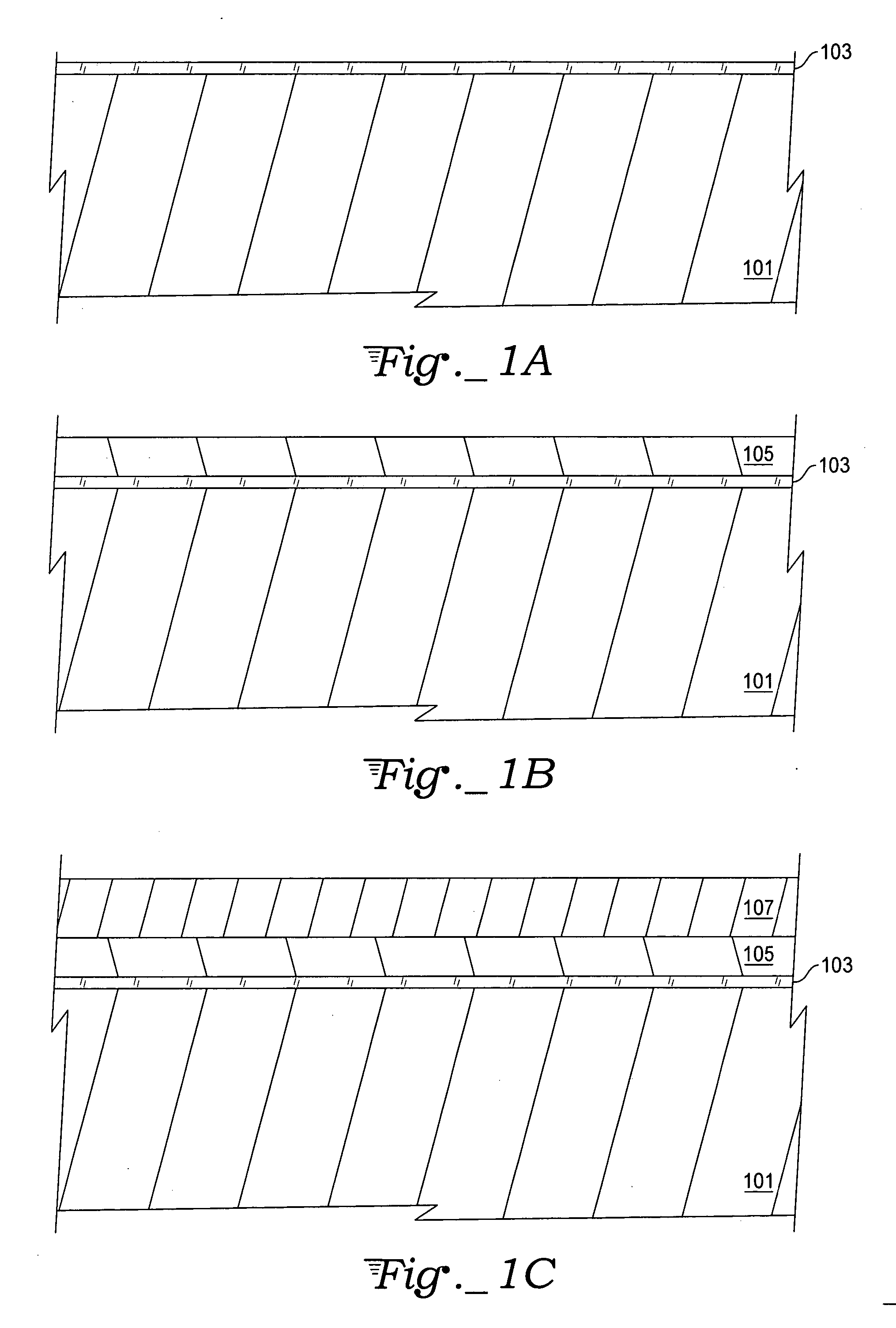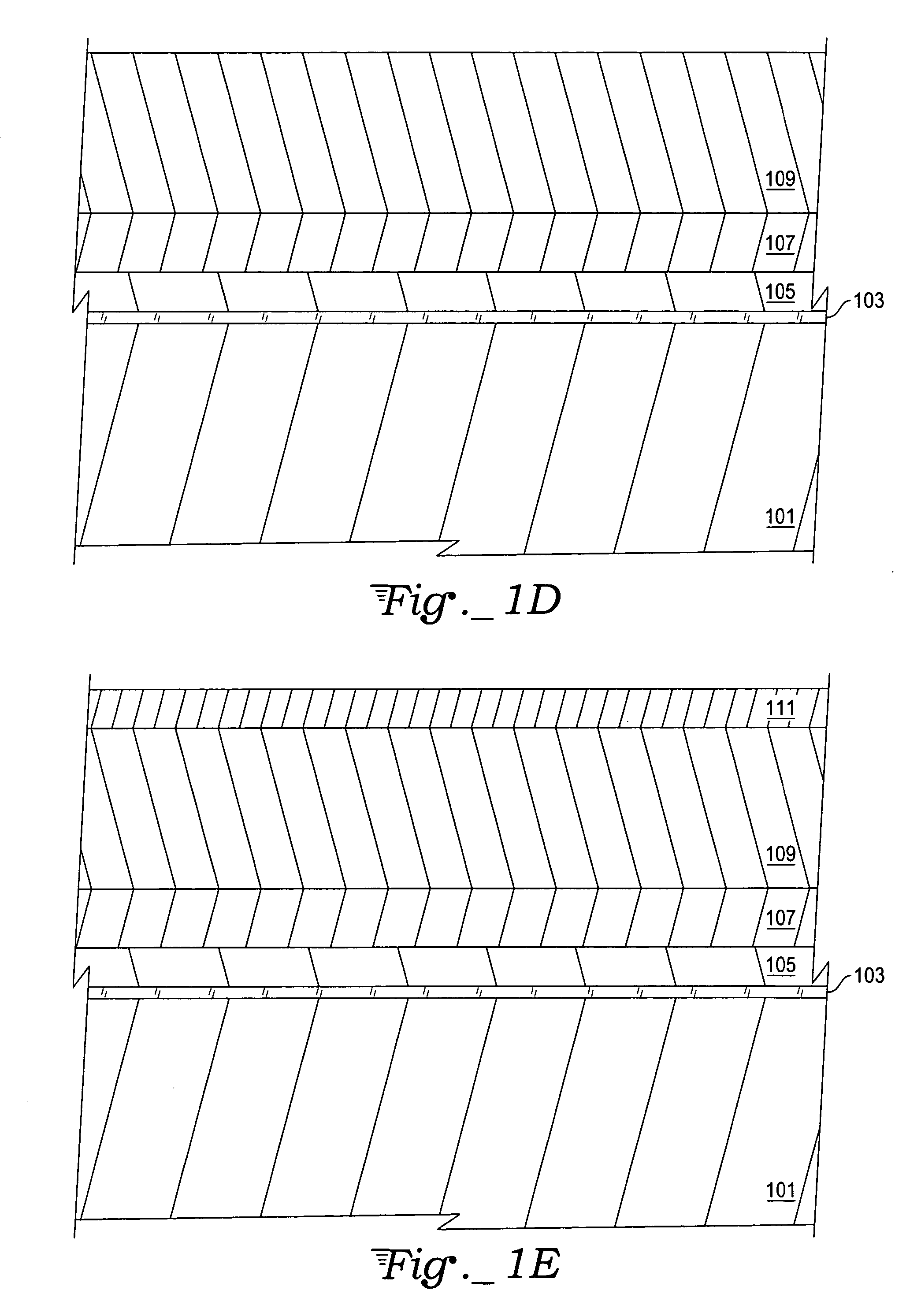Semiconductive film with dopant diffusion barrier and tunable work function
a technology of diffusion barrier and semi-conductive film, applied in the direction of semi-conductive devices, basic electric elements, electrical apparatus, etc., can solve the problems of device performance, limiting effects, and significant engineering challenges involving dopant diffusion, and achieve the effect of preventing depletion effects
- Summary
- Abstract
- Description
- Claims
- Application Information
AI Technical Summary
Benefits of technology
Problems solved by technology
Method used
Image
Examples
Embodiment Construction
[0021] With reference to FIGS. 1A-1E, overall exemplary process steps of a polysilicon germanium gate electrode illustrate diffusion-blocking techniques of the present invention. For simplicity, a single MOS transistor is illustrated with source and drain regions truncated. Formation of the gate electrode will take place upon a gate dielectric film. The gate dielectric film is deposited or otherwise formed upon a substrate. The MOS transistor may be of either a p-type or an n-type conductivity. Further, one skilled in the art will recognize that the exemplary process steps described herein are readily amenable to other processes and types of electronic devices.
[0022]FIG. 1A is a cross-section of a MOS capacitor constructed up to the gate dielectric and includes a substrate 101 and a gate dielectric 103. In a specific exemplary embodiment, the substrate 101 is a p-type silicon wafer and the gate dielectric 102 is comprised of silicon dioxide. Alternatively, the substrate 101 could a...
PUM
| Property | Measurement | Unit |
|---|---|---|
| dielectric thickness | aaaaa | aaaaa |
| thickness | aaaaa | aaaaa |
| thickness | aaaaa | aaaaa |
Abstract
Description
Claims
Application Information
 Login to View More
Login to View More - R&D
- Intellectual Property
- Life Sciences
- Materials
- Tech Scout
- Unparalleled Data Quality
- Higher Quality Content
- 60% Fewer Hallucinations
Browse by: Latest US Patents, China's latest patents, Technical Efficacy Thesaurus, Application Domain, Technology Topic, Popular Technical Reports.
© 2025 PatSnap. All rights reserved.Legal|Privacy policy|Modern Slavery Act Transparency Statement|Sitemap|About US| Contact US: help@patsnap.com



